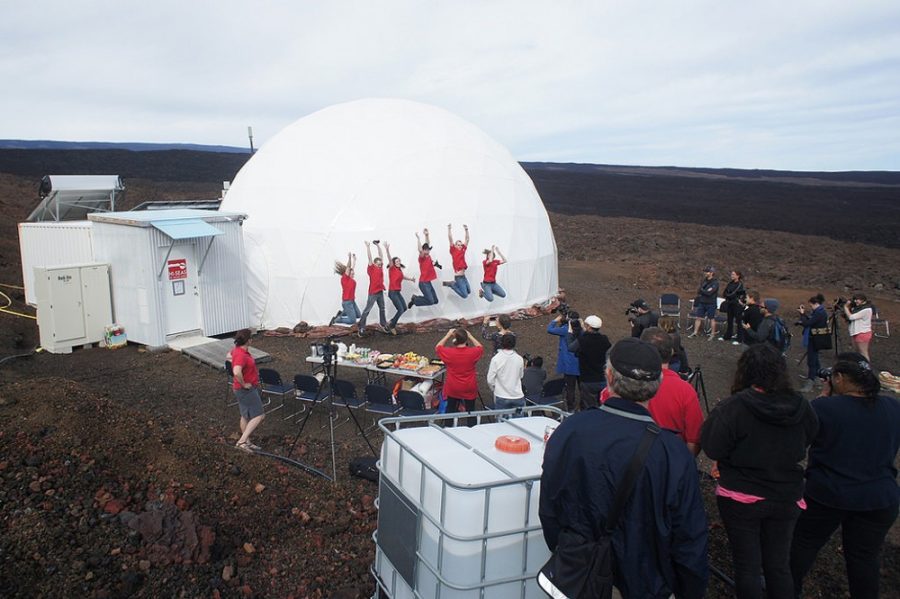Off the West coast lies a research facility that informs the NASA mission to Mars. The Hawai’i Space Exploration Analog and Simulation (HI-SEAS) program tests the endurance of humans contained in limited environments.
On Jan. 19, 2017 Crew V entered HI-SEAS in Mauna Loa , chosen for its rocky conditions similar to Mars’ surface. The six-member crew will exit the simulation Sept. 17, 2017.
During each mission, the crew is expected to live in a 1,200 square-foot research facility, according to the HI-SEAS website. The purpose of the mission is to observe how people interact in close contact.
The website said there is a 20 minute delay in communication, to simulate the same lag a crew on Mars would experience. A phone call would be frustrating. To combat this, astronauts record videos, send emails and ask family and friends to do the same.
The HI-SEAS crew are also observed on how well they work together, which is a common theme for such programs. The University of Arizona’s own Biosphere 2 projects, in 1991 and 1994, were similar in terms of isolation and teamwork.
RELATED: Campus Community reacts to DACA repeal
Though the HI-SEAS habitat isn’t sealed completely, the mission does depend on the crew making excursions and testing scientific tools.
Donna Viola, UA research specialist in planetary sciences, experienced a similar program while working towards her doctorate degree.
“During my Ph.D dissertation I was involved in the Mars Desert Research Station (MDRS) in Utah, where I was practically trapped with people I didn’t know well for two weeks as we did our own Mars simulation,” Viola said.
Viola said program simulations are necessary for long term projects like going to Mars.
“Any mission to Mars would be risky, but figuring out the social construct between teams is the most important thing,” Viola said. “We didn’t break the MDRS so I’d say we did pretty well.”
When it comes to crew teams that are chosen, NASA focuses on cohesion and how the candidates hold together after complex problems are provided. The researchers of HI-SEAS have observed that if a highly cohesive team is picked, the crew will also be highly autonomous, and want to solve problems their own way.
“The way NASA handles its risks on its missions is that there is a list of green problems for fine, and red or extreme risks makes the mission to Mars a no-fly,” according to Kim Binsted, principal investigator of HI-SEAS. “What we are trying to do is move the risks out of the red to support enabling a plausible mission to Mars.”
RELATED: Encryption Explained
Also unlike Biosphere 2, the HI-SEAS crews are not forced to grow their own food supply, as resources are dropped off away from the research facility, according to Binsted. They do need to control a rover to retrieve resources, but to enhance simulation people on the mission are required to leave the dome wearing space suits.
Crews are observed to see how much stress they experience during the period, which can last a couple months, Binsted said. Their stress is measured using a sociometer, a tool which records the volume of the members’ voices and how close they are to each other when speaking.
Using this, Binsted said it’s possible to track the relationship between each member. If they tend to avoid each other and raise their voices, it can signal problems with cohesion.
To relieve stress, virtual reality programs are used to help create images that help the members during the long periods of separation from family, friends and the whole world.
Crew V plays simple video games that are created to practice competition and collaboration. Over time, this activity also monitors what social groups are forming in the crew. According to Binsted, the purpose of including this research is to try to detect these problems without solely relying on self-report by the crew members for better results.
The Daily Wildcat readers can follow Crew V’s progress on Twitter, @HI_SEAS.
Follow The Daily Wildcat on Twitter









